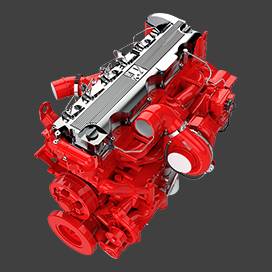តុលា . 16, 2024 04:00 Back to list
Understanding the Process of Turning Brake Drums for Optimal Performance and Safety
Understanding Brake Drum Turning Importance, Process, and Maintenance
Brake systems are fundamental to the safety and performance of any vehicle. Among the various components that play a critical role in brake efficiency, brake drums are essential parts of drum brake systems. Over time, due to friction and wear, these components can become uneven or damaged, leading to a decline in braking performance. This brings us to the procedure known as brake drum turning, a process significant for restoring drum surfaces to their optimal condition. In this article, we will explore the importance, process, and maintenance of brake drum turning.
What Is Brake Drum Turning?
Brake drum turning is a machining process that involves removing a thin layer of material from the surface of the brake drum. This procedure is done to achieve a smooth, flat surface that ensures uniform contact with the brake shoes. When the brake drum is worn down or has become scored due to friction, it can create an uneven surface. This unevenness can result in decreased braking efficiency, increased stopping distances, and can even lead to noise or vibration during braking. Regularly turning the brake drums can help mitigate these issues, prolonging the life of the brake system and ensuring the vehicle's safety.
Importance of Brake Drum Turning
The primary purpose of brake drum turning is to enhance braking performance. When the drums are resurfaced, they restore the drum's ability to effectively transfer frictional forces from the brake shoes to the drum, which is critical for timely stopping power. Furthermore, maintaining a smooth brake drum surface helps to
1. Reduce Noise Worn or scored brake drums often lead to squealing or grinding noises when braking. Turning the drums can eliminate these sounds by providing a consistent surface for the brake shoes.
2. Enhance Longevity By restoring the drum's surface, the life of both the drum and the brake shoes can be extended. Uneven wear on the shoes can cause them to wear out prematurely, necessitating more frequent replacements.
3. Improve Safety Vibrations and reduced responsiveness can make a vehicle harder to control, especially in emergency situations. Ensuring that brake drums are turned regularly can mitigate these safety risks.
The Process of Brake Drum Turning
The brake drum turning process is typically performed using specialized machinery known as a brake lathe. Here’s a general overview of the procedure
brake drum turning

1. Inspection Initially, a thorough inspection of the brake drums is conducted. This includes measuring the drum's thickness to ensure that it hasn’t reached its minimum allowable thickness. If the drums are too thin, they must be replaced rather than turned.
2. Removal The drums are then removed from the vehicle, a step that may involve loosening the wheel lug nuts and detaching the brake assembly.
3. Mounting Once removed, the drums are mounted onto the brake lathe. This machine is designed to securely hold the drum while it is being turned.
4. Turning The lathe operates by spinning the drum while a cutting tool removes a thin layer of material from the surface. The operator monitors the process to ensure an even cut, often checking for any imperfections.
5. Finishing After turning, the drum is usually polished to create a smooth finish. This step is crucial for enhancing the drum’s contact with the brake shoes.
6. Reinstallation Finally, the turned drums are reinstalled onto the vehicle, and the brake assembly is reattached. A final inspection is often performed to ensure everything is in optimal working condition.
Maintenance Tips for Brake Drums
To prolong the lifespan of brake drums and reduce the need for turning, regular maintenance is crucial. Here are some tips
- Routine Inspections Check brake components for wear on a regular basis. Early detection of problems can prevent severe damage. - Brake Fluid Checks Ensure that the brake fluid is at the correct levels and is in good condition. Contaminated fluid can lead to brake failure. - Brake Adjustment Ensure that the brakes are properly adjusted. Incorrect adjustments can cause uneven wear on the drums and shoes.
In conclusion, brake drum turning is a vital maintenance procedure that contributes significantly to vehicle safety and performance. Understanding its importance, process, and maintenance practices can not only enhance your vehicle’s braking efficiency but also extend the life of your braking system, ensuring safer journeys on the road. Regular inspections and timely drum turning are essential practices that all vehicle owners should consider to safeguard their driving experience.
-
Brake Drum Man - High-Quality Drum Brake Drums & Brake Shoes for Reliable Performance
NewsJun.24,2025
-
High-Quality Brake Drum Kamaz – Durable Drum Brake Drum & Brake Shoe Replacement
NewsJun.10,2025
-
High-Quality Brake Drum Liza for Drum Brake Systems - Superior Durability and Performance
NewsJun.10,2025
-
High-Quality Brake Drum Kamaz – Durable Drum Brake Drum & Brake Shoe Solutions
NewsJun.10,2025
-
Durable Kamaz Brake Drums High-Performance Truck Parts
NewsJun.09,2025
-
Premium Brake Drum Maz Kit with Shoes Enhanced Braking
NewsJun.09,2025
